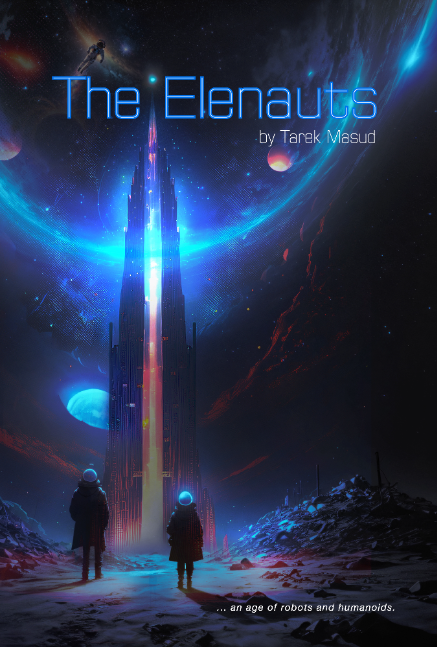Breaking Free: The Elenauts by Tarek Masud

Yes, breaking free, that’s the immediate challenge before mankind as far as space travel is concerned. In our quest for interstellar voyage to the nearest neighboring star we are still restrained by the gravity of our planet. We have successfully stepped onto the closest celestial body, the moon. Made our presence felt on the other planets of our solar system. But that’s just the first step in this lifelong journey that we have been preparing ourselves for. If the goal is to reach the Alpha Centauri within the next couple of centuries or to exploit the resources of the planets of our solar system, we have to think big. I mean really big, not just sending these tubelike pesky rockets to orbit. What I foresee, in comparison these rockets are pesky steps and I am not sure in the right direction because of their limited lifting capacity.
We need to think out of the box. The traditional method of sitting at the top of a missile and hurling ourselves into space will not solve the problem. At the rate we are making our planet uninhabitable, soon we might need to migrate to another planet for settlement. Apart from that, since childhood we watched with awe the possibilities before us in the TV series Star Trek. Like it did to millions, it triggered in many of us the craving to reach the stars. Of course, we understood our limitations, so we began thinking about the hurdles and overcoming those obstacles. Sometimes the most daunting challenges have very simple solutions, but we must be revolutionary in our approach.
For interstellar voyages we must build spaceships like the USS Enterprise in the Star Trek series if not larger. In this business the larger the better because there’s no question of air resistance in space. If we think about the planet as a spaceship, the first thing we should focus on is what makes it habitable for species like us. The planet’s size, gravity and atmosphere are the basic criterion that make life possible. Therefore, spaceships designed for interplanetary voyages must fulfill this criterion. They must have artificial gravity, atmosphere, self-sustainable echo system and above all the size of a city if not a country. The shape of the vessel could be anything that allows practical way to achieve artificial gravity. Since we are talking about a spaceship the size of a city, building them on the planet surface and lifting them to the orbit or space for assembly does not make sense. They have to be built in space. The rockets used for lifting astronauts to the orbit is one thing but lifting building materials and the manpower for constructing that kind of spaceship is another ballgame. The lifting capacity of the traditional vehicles and the amount of fuel required to blast them off to orbit render them absurd. It simply is not economical or time efficient. If we go by the present standard, it will take decades just to build one spacecraft we are talking about. Hence, an elevator to orbit is the solution to this challenge. This is the central theme of the science fiction “The Elenauts”. It will open up the gate to building on a mass scale in space. We still need some technological breakthroughs before we can build an elevator to orbit. For example, we will need robots the size of large buildings, fusion reactors, highly efficient jet or rocket fuel etc. Fortunately, the astounding progress in the field of research and development has brought the dream within the next few decades.
At one stage, the scientific community will start thinking about giving birth in space. This will raise ethical questions because it is uncertain how embryos will develop under zero gravity or artificial gravity at best. In “The Elenauts” I warned what might happen if we start playing God. Uncontrolled and unpredictable cell mutations are just one aspect of it.
The dangers of too much reliance upon robots and machines is another theme of the fiction. Already we have been trying to install microchips into the human body and brain. Eventually this experiment might end in the creation of the humanoids. Will it be good for us? Is it necessary? Only the future can answer these questions.
We still don’t know how mankind is going to address the challenges ahead of us. The days of the traditional methods of reaching orbit might not be over yet but if we are serious about interstellar voyages, it has to change.

